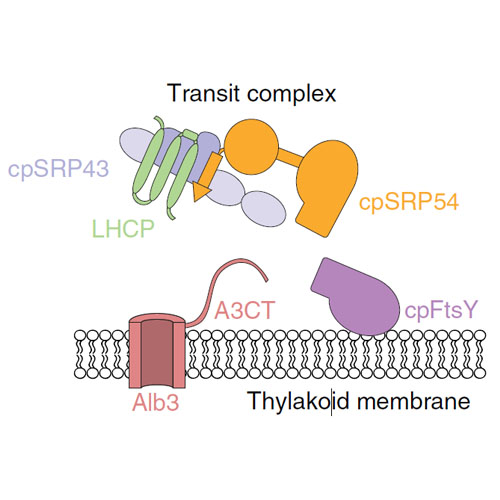Structural basis for cpSRP43 chromodomain selectivity and dynamics in Alb3 insertase interaction
16-Nov-2015
Nature Communications, 6, Article number: 8875, doi:10.1038/ncomms9875
Canonical membrane protein biogenesis requires co-translational delivery of ribosome-associated proteins to the Sec translocase and depends on the signal recognition particle (SRP) and its receptor (SR). In contrast, high-throughput delivery of abundant light-harvesting chlorophyll a,b-binding proteins (LHCPs) in chloroplasts to the Alb3 insertase occurs post-translationally via a soluble transit complex including the cpSRP43/cpSRP54 heterodimer (cpSRP). Here we describe the molecular mechanisms of tethering cpSRP to the Alb3 insertase by specific interaction of cpSRP43 chromodomain 3 with a linear motif in the Alb3 C-terminal tail. Combining NMR spectroscopy, X-ray crystallography and biochemical analyses, we dissect the structural basis for selectivity of chromodomains 2 and 3 for their respective ligands cpSRP54 and Alb3, respectively. Negative cooperativity in ligand binding can be explained by dynamics in the chromodomain interface. Our study provides a model for membrane recruitment of the transit complex and may serve as a prototype for a functional gain by the tandem arrangement of chromodomains.











